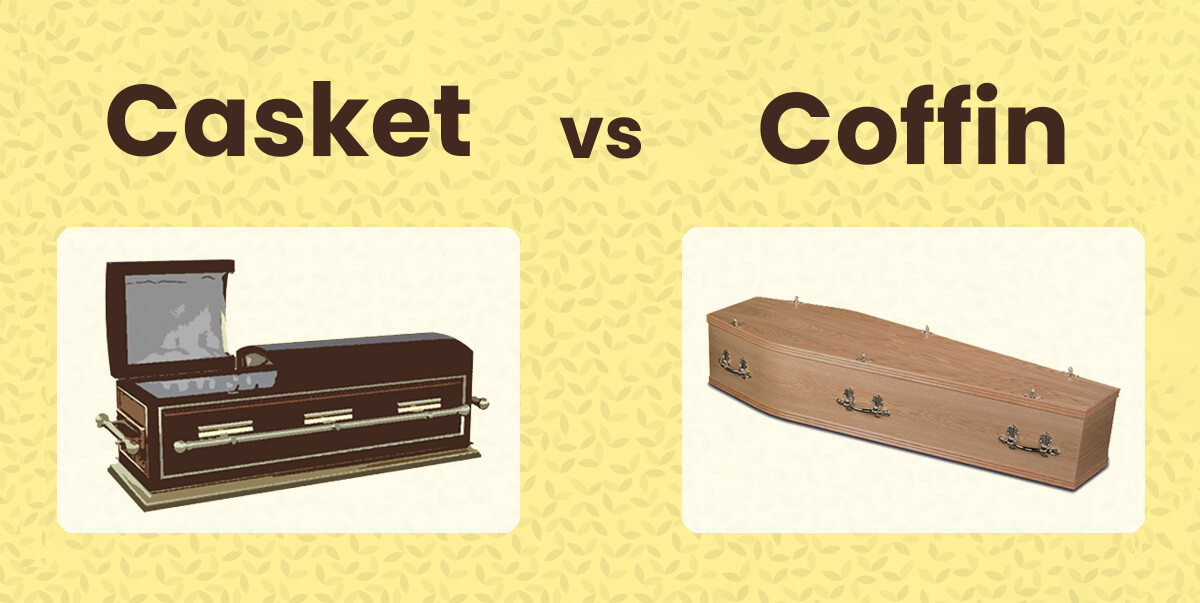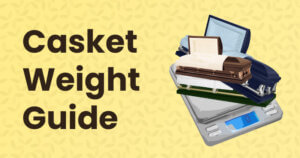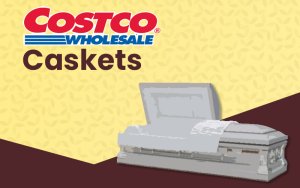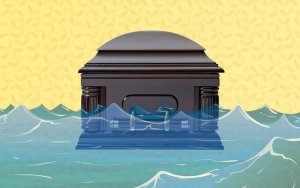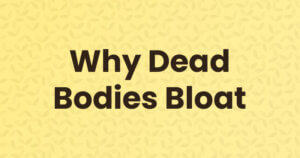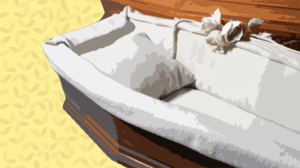Casket vs coffin — or coffin vs casket.
What’s the difference, if any?
Some people think they’re the same thing, but that’s not really true.
Join us to explore the fascinating world of burial containers if you’re dying to learn more.
In This Article
What Is The Difference Between a Casket and A Coffin?
This simple question has two wildly divergent answers.
One is purely linguistic — British people typically refer to “coffins,” while Americans talk about “caskets.” The two do have significant aesthetic and functional differences as well, however.
The fundamental difference is:
Caskets are rectangular burial containers with hinged lids used for burying a deceased person while coffins are six-sided wooden boxes, tapered to fit a human body, that typically have a removable lid and cloth interior. Caskets usually have handles for easy transport, whereas coffins do not.
Caskets Explained
Most caskets can broadly be described as rectangular burial containers.
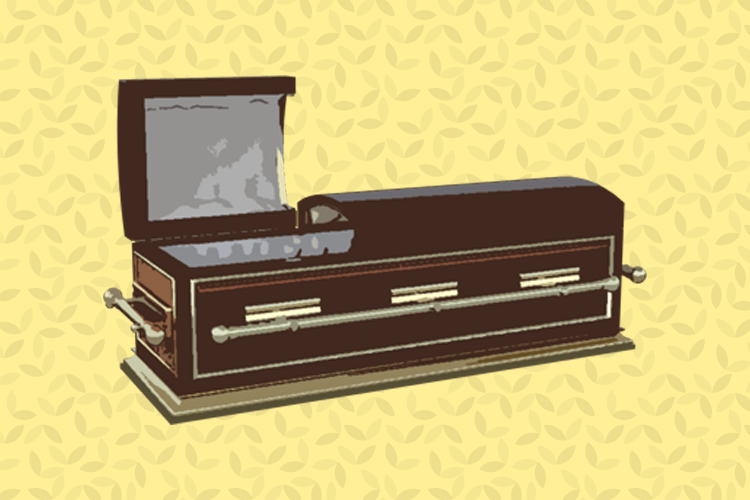
They can be made from a variety of materials, including wood, metal, and fiberglass, and may have simple or elaborate finishes. Steel and hardwood caskets are among the most sought-after choices.
Caskets are usually elaborately designed with upholstered interiors to provide the departed with a comfortable resting place. They almost always have hinged lids that can easily be opened and closed.
A “half-couch” or “double-couch” casket has a split lid, which allows mourners to view the deceased’s upper body when they say their final goodbyes, while a “full-couch” casket features one lid.
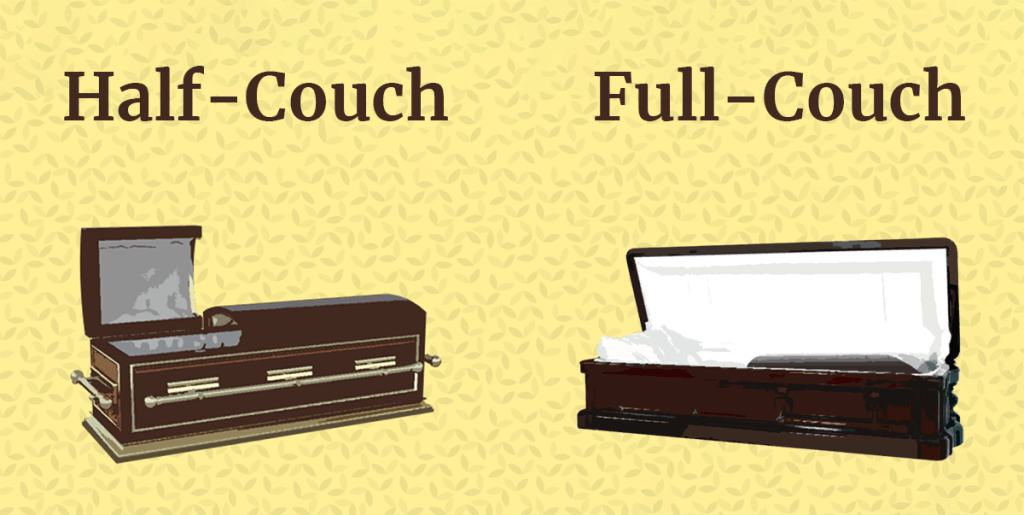
Caskets are usually equipped with handles (swing-bar or fixed) to allow pallbearers to carry the deceased to their final resting place.
Coffins Explained
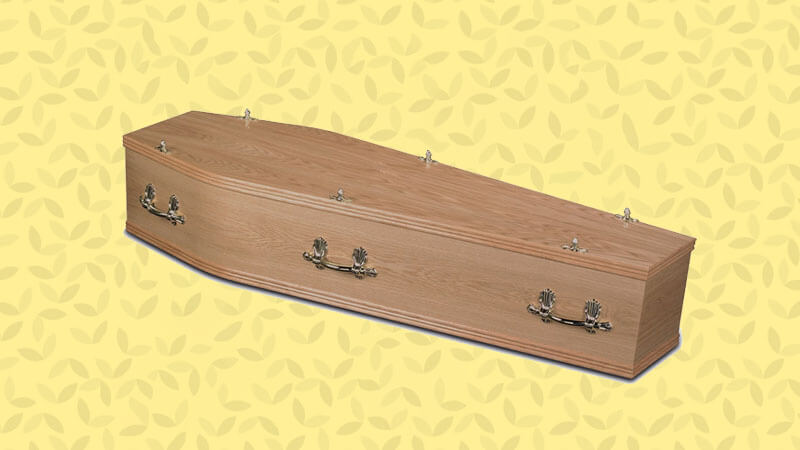
Coffins are six-sided burial containers that are rarely used in the United States these days but remain popular in the United Kingdom, Australia, New Zealand, and some parts of Canada.
Owing to their more complex shape, coffins have lift-off lids and are not equipped with hinges. They were historically designed more simply and are still typically made from solid wood. While modern coffins are sometimes upholstered, this is less common than with caskets.
While coffins may be equipped with handles that allow pallbearers to carry them more easily – this is by no means guaranteed.
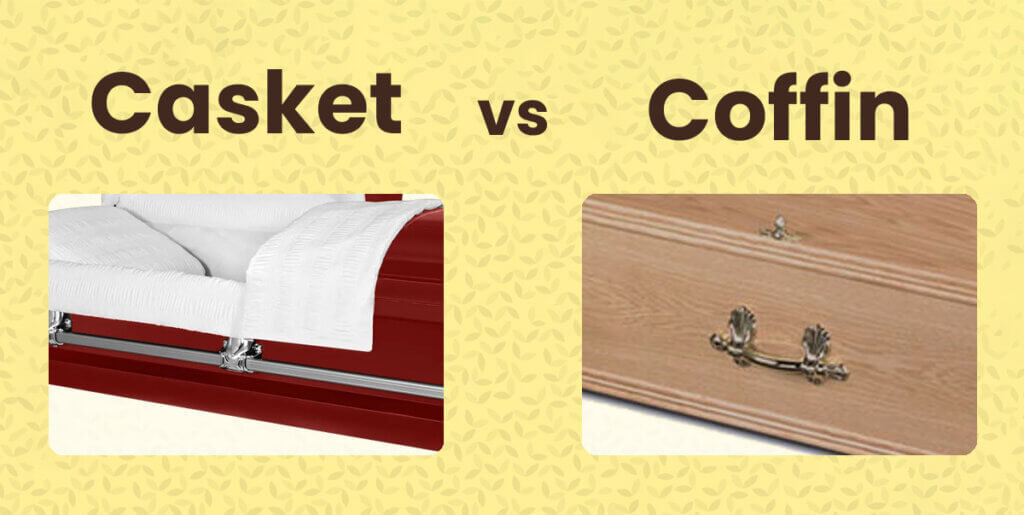
But modern coffin design is sometimes inspired by the caskets that have become so commonplace, and metal, upholstered coffins reminiscent of caskets do exist.
So They’re Not the Same Thing?
No, caskets and coffins are not the same thing.
Yes, caskets and coffins are both burial containers — so they serve the same fundamental purpose.
However, caskets are four-sided rectangular shape burial containers, while coffins have six sides. Coffins tend to have a simple design, while many caskets seek to make the deceased look as comfortable as possible and have interiors that resemble a soft bed.
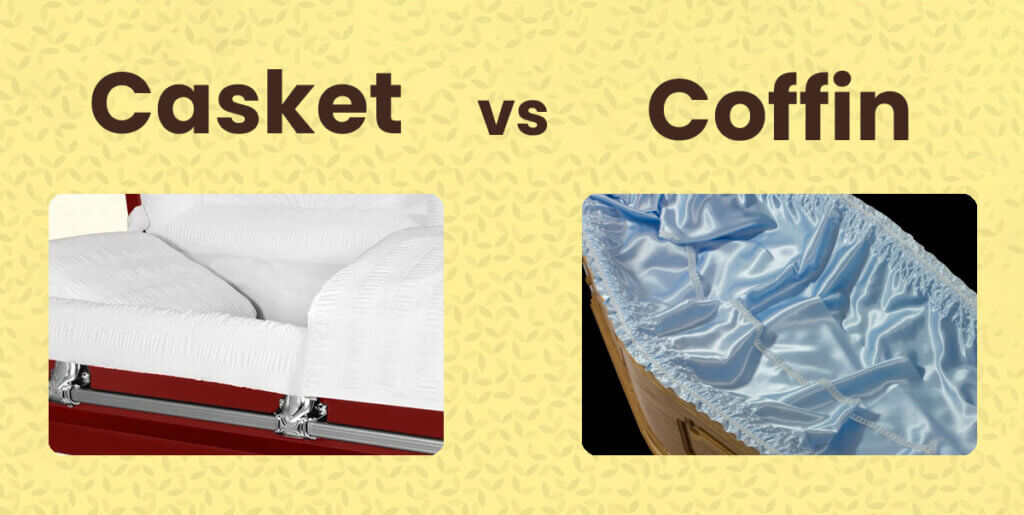
Some people use the words “casket” and “coffin” interchangeably.
For example, British people will typically call any burial container a coffin, regardless of its shape, while Americans use “casket” to refer to any burial container.
(Those who work in a funeral home would be a notable exception, of course!)
Other Differences Between Caskets and Coffins
You now know that coffins have six sides, while caskets only have four sides.
The two also have significant aesthetic and functional differences beyond that.
Caskets are More Expensive
While elaborate coffins with complex finishes, handles, and upholstery exist, these containers tend to be fairly simple — without any bells and whistles.
This makes them less expensive than caskets. The price difference is typically significant, given caskets usually have multiple layers, detailed upholstery, hinged double lids, and even hermetic seals to keep water and debris from entering.
This naturally increases their cost.
Caskets are More Common in the USA, Coffins are More Common in the UK
Not only is the word “casket” commonly used to refer to a burial container in the US, but Americans are also most likely to opt to be buried in a casket – it’s the default option.
Americans are likely to associate the six-sided shape of coffins with Halloween and old movies, which may further explain why not many people would want to be buried in them.
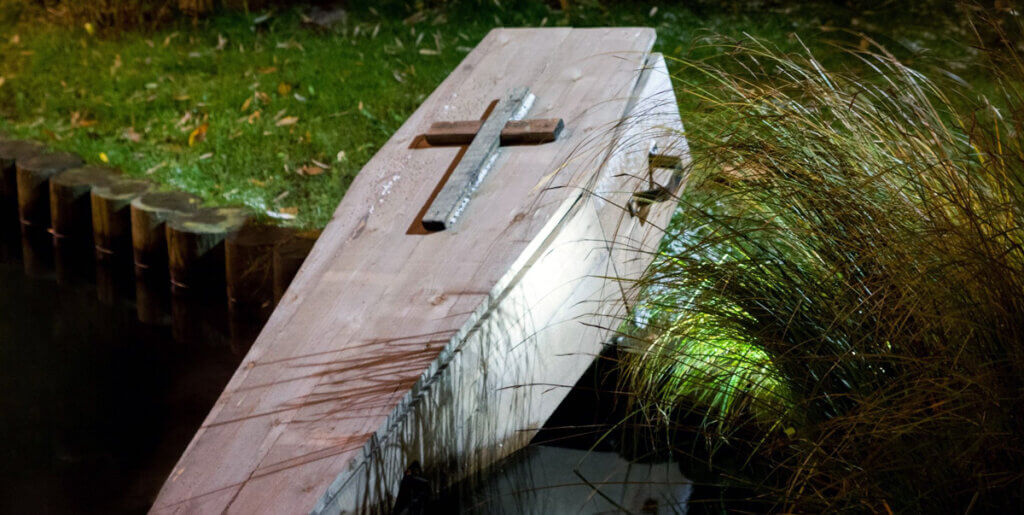
People in the UK, on the other hand, still prefer coffins, with eco-friendly natural burial alternatives such as wicker baskets, bamboo coffins, and wool coffins also becoming increasingly popular.
Cultural spheres of influence are apparent in other English-speaking countries, too.
Australians tend to prefer coffins, while New Zealanders favor simpler burial containers but still refer to them as caskets.
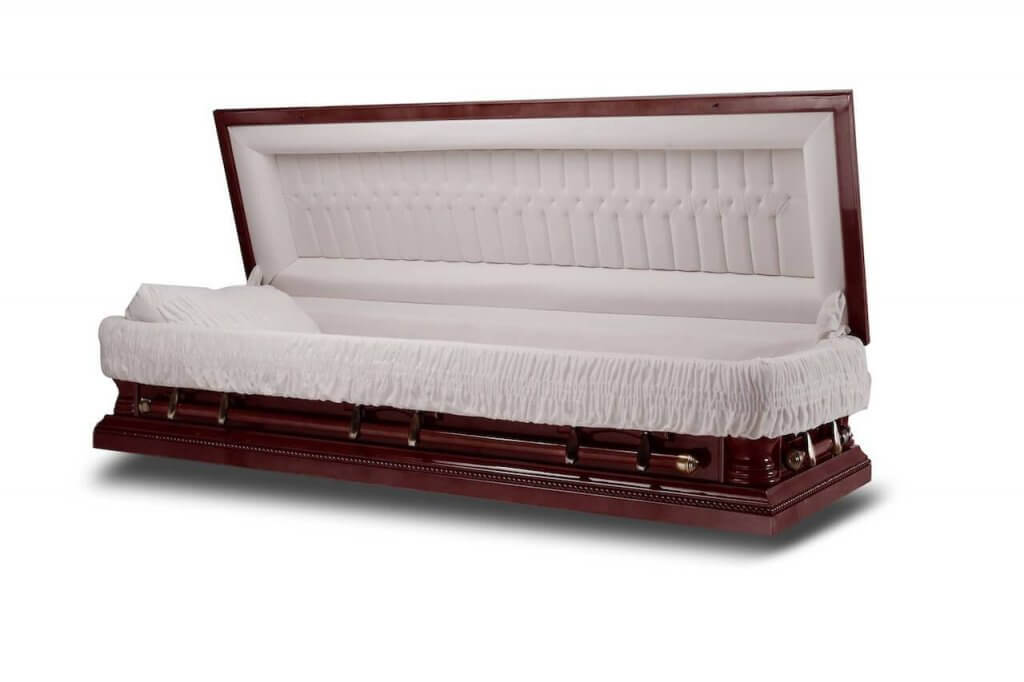
It is, of course, good to keep in mind that someone’s religious and cultural background shapes their burial preferences a great deal.
Some Americans seek out coffins, while some British people favor the caskets that are so ubiquitous in the United States.
These people may have a hard time finding a retailer than offers what they seek, but with so many options to choose from today, they will likely get there in the end.
Historical Origins
The word “coffin” comes from the old French word for “box.”
“Casket” also means “box,” but this Middle English word is more closely associated with the little boxes people use to keep jewelry in – which is also what the work “casket” means for most people in England today.
Despite the fact that six-sided burial containers are more complicated to construct than rectangular burial containers, they are widely thought to predate caskets by centuries.
The six-sided design became popular across the western world and is so culturally ingrained in the United Kingdom that few people choose four-sided burial containers.
Caskets only became popular in the United States during the 1800s.
The precursor to funeral homes emerged at the same time, and the need to preserve bodies for longer made embalming commonplace. Caskets were seen as more elegant burial containers that showed the dead more respect.
Perhaps because they don’t stand out as much as coffins and because they are typically upholstered, caskets offer the appearance that the deceased is simply sleeping in bed. This can be comforting for relatives.
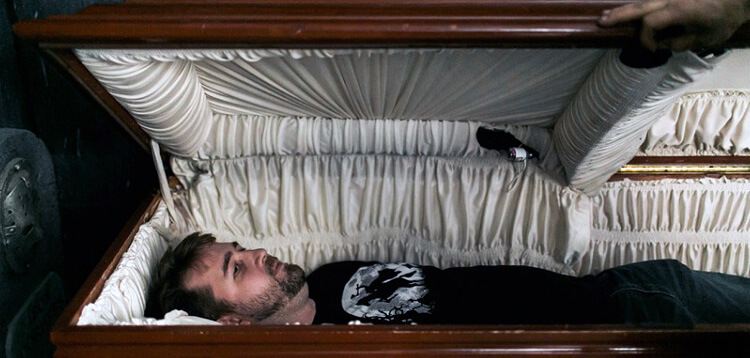
In the UK, meanwhile, this new trend never really caught on. People were buried in funeral shrouds prior to the 18th century, but coffins became more frequent as legal changes made them more affordable.
The language we use reflects the culture around us.
For this reason, Americans are likely to use the word “casket” to refer to any burial container, regardless of its shape. British people pick the word “coffin” more often, even if they are talking about a rectangular shape burial container.
Which Should You Choose?
Choosing your own burial container is a very personal decision.
Your cultural background, religion, and philosophical beliefs will probably all factor into the decision you end up making.
The modern funeral industry has introduced many new options, including burial containers made from wool, bamboo, and wicker (woven willow branches).
Those who want cremation can often rent coffins and caskets to be used during the funeral service. These rented caskets can be reupholstered before being used again. This is a way to save money, as caskets are not cremated together with the deceased anyway.
People who are choosing a burial container for a deceased family member who did not leave any specific instructions will want to take the deceased’s preferences during life into account when making a decision.
Of course, there’s no denying that the market also plays a role in dictating your choices — if caskets are popular where you live, sourcing a coffin can be very complicated! The reverse is also true.
Finally, budgetary considerations will almost always impact your final choice — funerals are expensive!
This is actually a good reason to buy your own burial container before you pass. It will save your loved ones from having to make difficult decisions while also worrying about finances.

